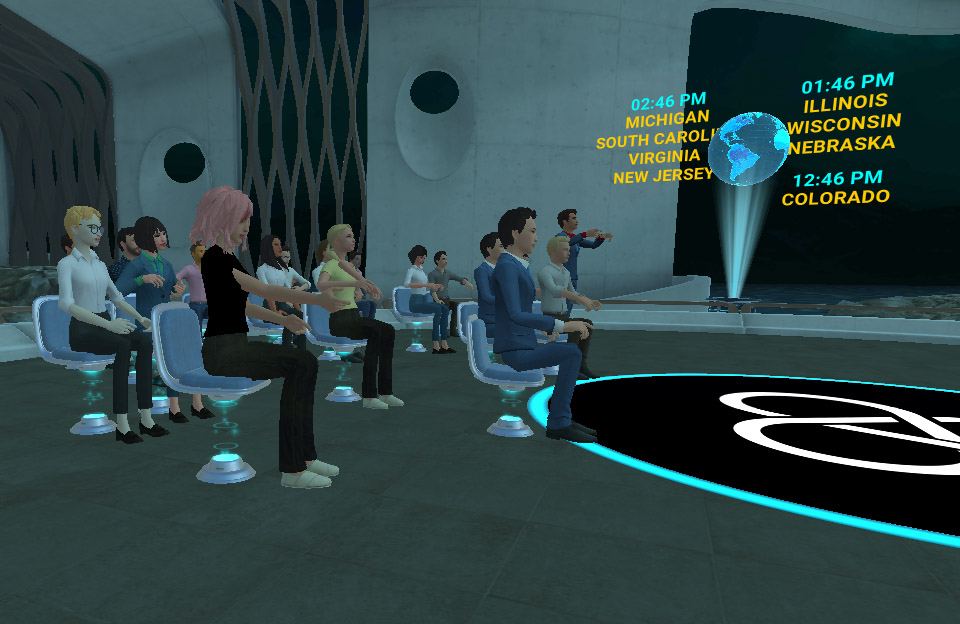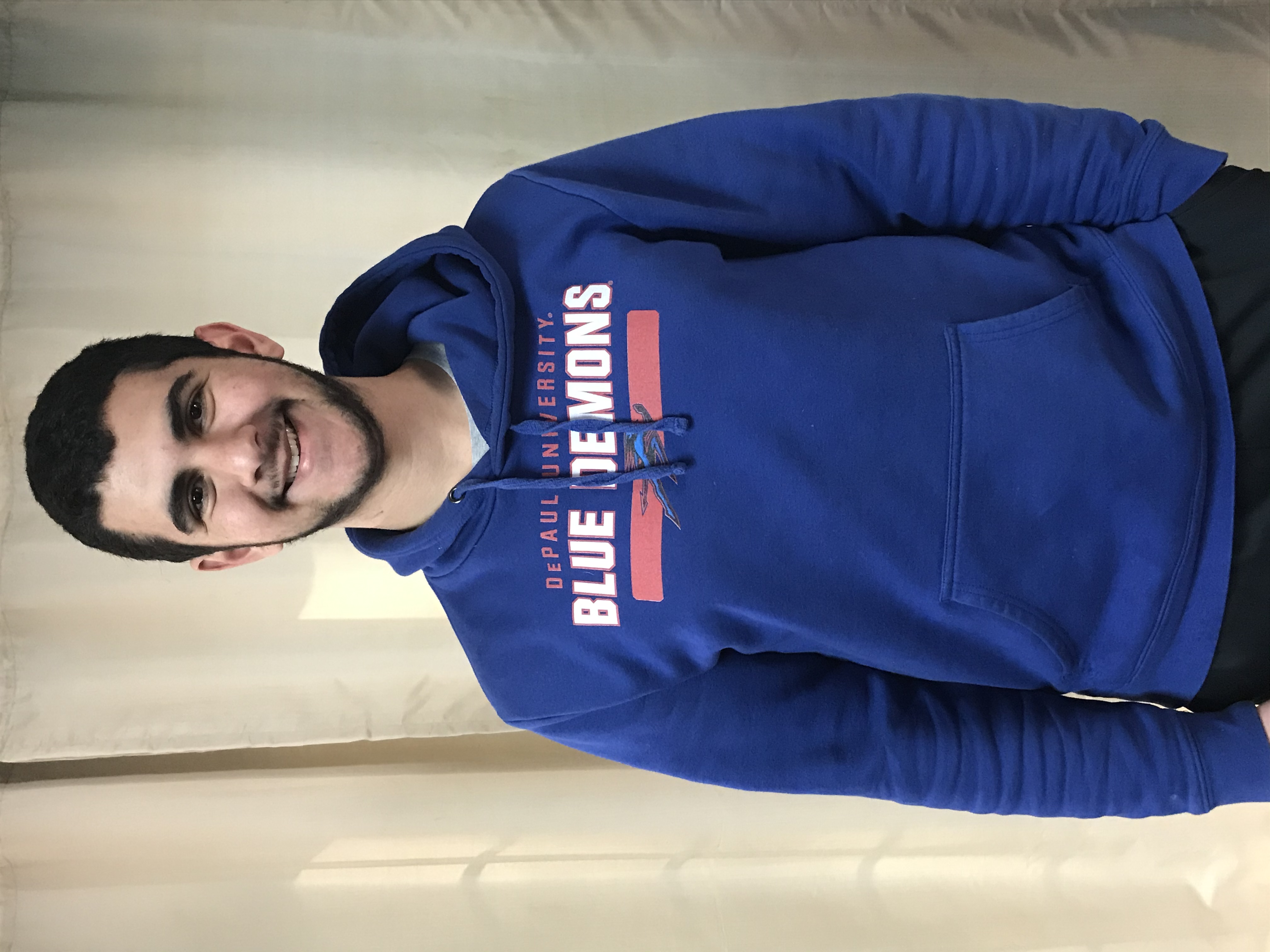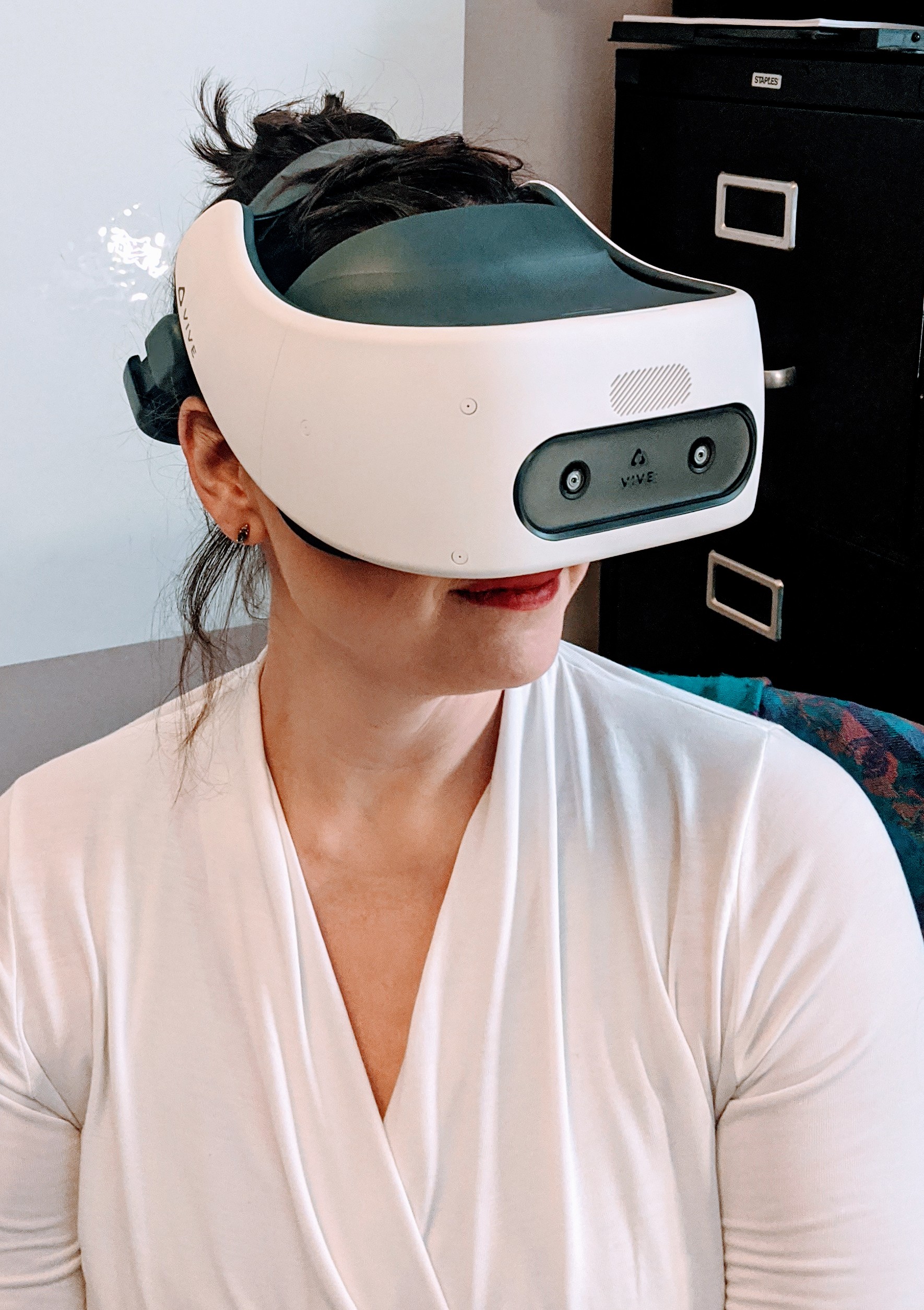 DePaul students gather in a virtual reality classroom during associate professor Bree McEwan's Honors Discover Chicago class. (Image courtesy of Bree McEwan)
DePaul students gather in a virtual reality classroom during associate professor Bree McEwan's Honors Discover Chicago class. (Image courtesy of Bree McEwan)It’s tough to appreciate how immersive a virtual reality headset can be until you actually put one on.
“It really blocks out everything that's around you, and it does feel like you're with other people in there,” says DePaul student Ethan Ament.
During a time when many people are craving connection and a change of scenery, Bree McEwan, an associate professor in the College of Communication, is helping her students, including Ament, connect using virtual reality or VR.
 First-year student Ethan Ament enjoyed exploring Chicago history and culture using a virtual reality headset from his home in New Jersey. (Image courtesy of Ethan Ament)
First-year student Ethan Ament enjoyed exploring Chicago history and culture using a virtual reality headset from his home in New Jersey. (Image courtesy of Ethan Ament) “Gaming gets people into the virtual space because they want to get in the headset. But now we are starting to see social spaces come to life,” says McEwan, who researches the intersection of technology and interpersonal communication. In fall of 2020, McEwan taught an Honors Discover Chicago class that incorporated HTC Focus Plus virtual reality headsets. Now scholars across DePaul are asking: How will VR change communication?
Pivot and deliver
Before the pandemic, McEwan and her colleague, Paul Booth, received an innovation grant from DePaul to launch the Virtual and Augmented Reality in Communication Lab. When the pandemic led to new restrictions, they pivoted to offer the VR experience to freshmen. McEwan dropped off headsets to many of her 23 first-year students in Chicagoland, and they shipped the rest to those living out of state.
“We are at a point where students want to start thinking about communication processes and virtual reality. They want to start thinking about how it applies to their careers,” McEwan says. The class wore the headsets to gather in a virtual reality classroom where they created their own avatars, viewed PowerPoints and other media, and interacted with each other.
For first-year student Tessyi Dewhurst, virtual reality intersects with her career plans. “We covered a lot of topics involving how VR is changing our society, and how inventors are pushing the bounds and limitations, which I thought was very interesting,” Dewhurst says. A screenwriting major from Colorado, Dewhurst dreams about writing scripts for movies and games in VR. “I had a blast playing around with the headset,” she says.
 College of Communication faculty member Bree Mc Ewan wears a virtual reality headset. McEwan studies the intersection of technology and interpersonal communication. (Image courtesy of Bree McEwan)
College of Communication faculty member Bree Mc Ewan wears a virtual reality headset. McEwan studies the intersection of technology and interpersonal communication. (Image courtesy of Bree McEwan) Connecting from afar to sweet home Chicago
Ament, an accounting major, had never used a VR headset before the class. Living at home in New Jersey for now, he found it to be immersive and a nice break from Zoom. The class learned how to build models of Chicago-themed items like a hot dog, and then brought it into the VR world. He says learning about Chicago history was a highlight of the class — from the Chicago Fire to the Union Stock Yards.
“We were able to go to those places through VR. People took pictures and turned them into 3D spaces. It let you go to those places and experience it more than looking at a 2D picture and reading a caption,” Ament says.
The Discover Chicago class made Ament even more eager to get to campus. He has family in Chicago and is a huge White Sox fan.
“I’m ready to go out there and go to those games,” he says.
Communication research potential
Plans for the VARC lab live on. McEwan and Booth envision a space for College of Communication students and faculty to experience VR/AR technology firsthand and to explore how these tools affect society, culture, media and interpersonal relationships.
“What’s really versatile about VR is you can study it from all sorts of different perspectives,” Booth says.
As a professor of media and cinema studies, Booth is interested in how virtual reality affects fans’ interaction with art. Advertising students could examine how brands are using VR to advertise products. McEwan and communication studies scholars are interested in how VR changes the way we communicate with each other.
“It’s such a new technology and is really only just catching on. In the consumer market the sky is wide open, and I think DePaul can really be something of a leader in how VR can be used in the classroom—for research purposes and to enable student-teacher interaction,” Booth says.
For more information the VARC lab, visit
http://bit.ly/DPUVARC.